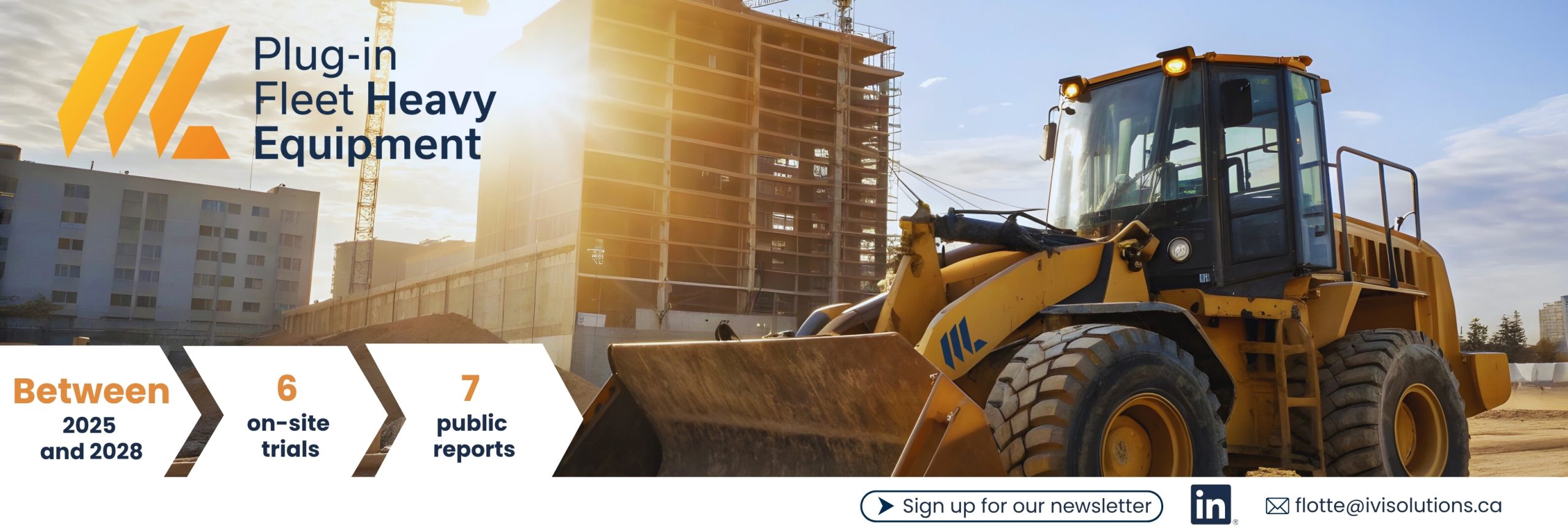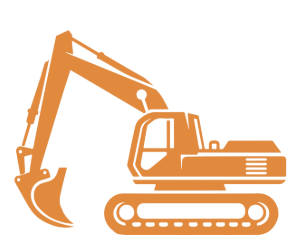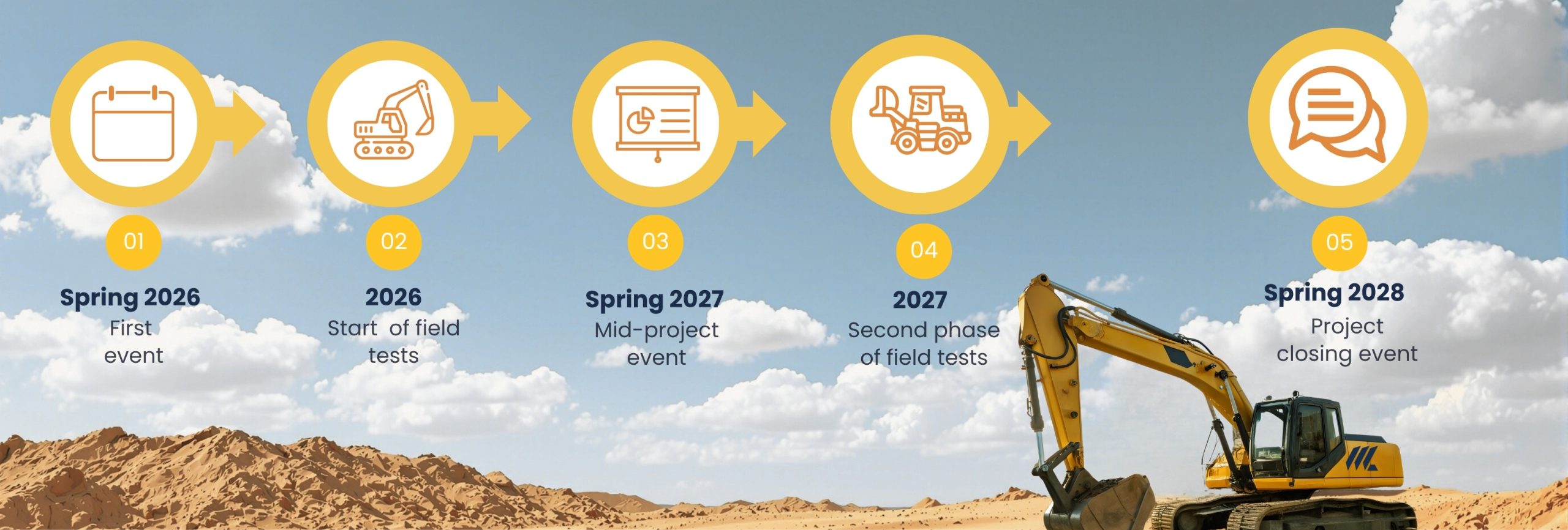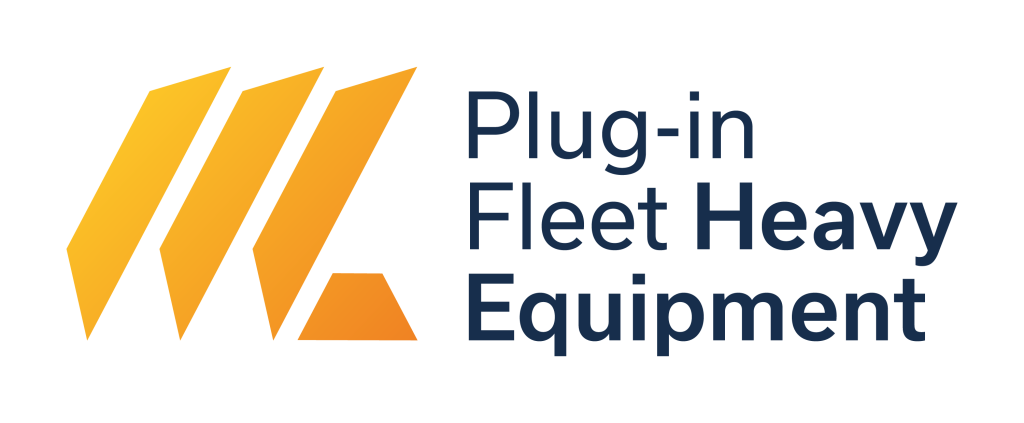
Subscribe to the Plug-in – Fleet Heavy Equipment newsletter
The go-to resource for tracking the project’s progress and results throughout its implementation.
Led by IVI, this project evaluates, under real operating conditions, the operational, financial, and environmental performance of electric heavy machinery for fleet managers and operators across Quebec.
It is made possible through financial support from the Government of Quebec under the Action-Climat Québec program, coordinated by the Fonds d’action québécois pour le développement durable, as part of the 2030 Plan for a Green Economy.
–
–
A Strategic Sector for Reducing GHG Emissions
Heavy machinery such as excavators, loaders, bulldozers, and other equipment plays a central role in Quebec’s economy but also represents a significant source of greenhouse gas (GHG) emissions. By gradually replacing diesel engines with electric technologies, the sector can reduce its carbon footprint, improve air quality, and decrease its dependence on fossil fuels.
Heavy machinery is one of the last major sectors to begin its energy transition. Running from 2025 to 2028, the project aims to accelerate the adoption of electric equipment across various settings, from construction to municipal and agricultural sectors, and even in more specialized environments such as zoological parks, while supporting businesses throughout this technological transformation.
A four-part project across Quebec

Field Trials Under Real-World Conditions
6 trials will be conducted across Quebec on construction sites and industrial locations. Each lasting 2 weeks, they will include the installation of telemetry devices to collect precise data on operating hours, duty cycles, charging power, and energy consumption in kWh. The electric machines tested will temporarily replace equivalent diesel equipment, allowing for an accurate assessment of their performance under real-world conditions.

Data Collection and Analysis
The project will produce 7 public and freely accessible reports detailing the operational, financial, and environmental performance of electric machines.
These analyses will help identify the benefits and limitations of the technology within the Quebec context, taking into account climate, working conditions, and usage intensity.

Events and Training
3 major events will mark key milestones of the project.
At each stage, workshops, panels, and exhibition booths will provide opportunities to share learnings. A targeted training campaign will support operators and fleet managers to ensure optimal adoption. Video capsules and testimonials will further help disseminate knowledge to a broader audience.

Expertise and Change Support
This project aims to support the industry through its transition by addressing both human and organizational dimensions. Following the release of the summary report, the IVI team will offer personalized support to companies interested in acquiring electric heavy machinery, providing consulting services tailored to their specific needs.
Timeline

Companies can get involved in several ways.
By participating in this project, organizations actively contribute to sustainable innovation. They help reduce emissions while supporting the industry in its transition toward cleaner and more competitive technologies.
The Plug-in Fleet Heavy Equipment project is currently seeking companies ready to collaborate and engage in this initiative. To discuss participation and receive the visibility plan, please contact the project team at: flotte@ivisolutions.ca
.
Become one of the following partner companies and enjoy, among other benefits, exclusive access to project data:
Partners
They provide the equipment necessary for the project’s implementation: machines, charging stations, site access, and more.
The project focuses on standard electric construction equipment, including skid steer loaders, front-end loaders, backhoe loaders, wheel tractor scrapers, road graders, excavators, and bulldozers, ensuring a comprehensive approach to electrifying key machinery across the sector.
Ambassadors
They test the machine on a construction site for two weeks, replacing an equivalent diesel vehicle. The machine’s usage should be maximized during the trial period to gather as much usage data as possible. Ambassadors must be available to share operational information throughout the trial and during post-trial events. Their operators will be invited to share feedback on the machine’s use to collect qualitative data on the use of electric machinery.
Associations
They offer services that help amplify the project’s reach and impact. This may include access to their network for promoting the project and its events, consultations and sharing of expertise, participation in strategic discussions, as well as other forms of support that contribute to the project’s visibility and success.
Spokesperson 
He participates in training workshops and project events. As a consultant, the spokesperson must remain available throughout the duration of the project to discuss the data collected during the trials. He also takes part in the project’s follow-up committee.
.
Secondary Partners
They provide a space to host project-related events, which may include access to a resource person, training rooms, a testing ground, and other contributions that support the success of the project.
FAQ
Why is this project a key driver in the transition to electric heavy equipment?
More than 185,000 work vehicles were registered in Québec in 2023 (+29% since 2018), highlighting the importance of decarbonizing heavy machinery.¹ Used intensively on construction sites, these machines significantly contribute to emissions in the “other transportation” sector, which saw a 63.7% increase between 1990 and 2021.²
Today, companies are increasingly seeking to reduce their environmental footprint. Electrifying fleets is emerging as an effective and measurable solution to meet GHG reduction targets. However, the high acquisition cost of these technologies and the lack of reliable local data still hinder their adoption.
This project aims precisely to address these gaps. It will help assess the actual cost of ownership, estimate return on investment, and identify favorable conditions for deploying electric heavy machinery.
This flagship initiative builds on the expertise developed through the Plug-in Fleet – Light Vehicles and Plug-in Fleet – Heavy Duty Trucks projects, carried out in recent years using a rigorous approach based on experimentation, analysis, and transparent dissemination of results. The goal is to equip ecosystem stakeholders and support their investment decisions.
Finally, IVI’s neutral and non-commercial framework, as a non-profit organization, ensures objective results for the industry, helping identify the operational contexts best suited for this technology.
¹ Data from the Société de l’assurance automobile du Québec (SAAQ), available on Données Québec.
² GHG Inventory 1990–2021 published by the Ministère de l’Environnement, de la Lutte contre les changements climatiques, de la Faune et des Parcs (MELCCFP).
What are the key data points on heavy machinery and its impact?
Heavy machinery is often used continuously on construction sites, resulting in a lot of unnecessary idling and, consequently, significant pollution. For example, a diesel excavator can consume up to 40 liters of fuel per hour.¹ Each liter of burned diesel produces approximately 2.7 kg2 of CO₂, which represents, for a machine operating 2,000 hours per year, over 230 tons of CO₂ emitted.
In Quebec, the off-road vehicle sector (construction, mining, manufacturing, etc.) emits more than 3 Mt of CO₂ equivalent annually3, accounting for over 43 % of emissions from the “other transportation” sector. Between 1990 and 2021, emissions in this sector increased by 63.7 %, ranking it as the third-largest emitter. 4
Internationally, several regions have already adopted policies promoting the use of zero-emission vehicles on construction sites. Oslo, for instance, has implemented zero-emission construction sites, benefiting from its electricity network primarily powered by hydropower, similar to Quebec. Cities such as Stockholm and Copenhagen have also followed Norway’s example.
¹ European Rental Association (ERA), Carbon Footprint of Construction Equipment Report (2020).
² Environment and Climate Change Canada (ECCC), Official Emission Factors for Fuels in Canada.
³ Québec Transportation Sector, Table 8: GHG Emissions by Mode of Transport, Natural Resources Canada.
⁴ GHG Inventory 1990–2021, published by the Ministère de l’Environnement, de la Lutte contre les changements climatiques, de la Faune et des Parcs (MELCCFP).
Who can benefit from this project?
Research on zero-emission heavy machinery is still in its early stages, and Quebec is beginning to see the first equipment available on the market, such as excavators, wheel loaders, and backhoe loaders. Market introduction is happening gradually, starting with compact machines, then medium-sized ones, before reaching the heaviest electric models.
In this context of transformation, companies need concrete benchmarks, locally validated feedback, and support to navigate the technical, economic, and regulatory challenges associated with the energy transition. This project therefore aims to primarily support fleet managers, operators, and stakeholders in Quebec’s construction and worksites industry.
However, its audience is broader: training institutions, regional actors, sustainability experts, public-sector representatives, as well as Quebec’s educational community and general public. All can benefit from the knowledge and outcomes generated, free of charge.
What are the benefits of electrifying heavy machinery?
Electric heavy machinery could offer numerous benefits beyond reducing GHG emissions, improving air quality, lowering noise levels on construction sites, and ending dependence on fossil fuels.
These benefits will be assessed in Quebec through the project’s trials:
- Reduction of greenhouse gas (GHG) emissions and local pollutants, contributing to better air quality on and around construction sites.
- Lower noise levels and improved working conditions: less vibration, smoke, and noise disturbances for operators.
- Reduced operating costs: lower fuel and maintenance expenses.
- Increased productivity: ability to work in sensitive environments (urban areas, indoor spaces, or near residential zones).
- Preparation for future regulations: alignment with increasingly strict environmental standards.
- Opportunity for innovation: new charging practices and jobsite organization.
- Extended equipment lifespan: thanks to automatic engine shut-off when idle.
- Responsive performance: electric machinery can lift loads equivalent to diesel and responds more quickly to operator commands.
What industry concerns need to be taken into account?
According to the APMLQ+ (Association des Propriétaires de Machinerie Lourde du Québec), fleet managers of heavy equipment show strong and growing interest in zero-emission technologies. However, based on trials and pilot projects, it appears that the current equipment offerings are not yet fully suitable for widespread daily use without significantly altering existing practices. Efficient operational logistics, charging methods and times, as well as installation and training costs, are major obstacles preventing them from moving forward with electrification.
Operators surveyed by IVI question whether the technology is advanced enough and express frustration over the lack of resources and technical support for implementation. Their concerns include autonomy, charging duration and accessibility, acquisition costs, and the ability to adapt to operational needs.
As electric construction machinery begins to emerge in Quebec, fleet managers are wondering whether these machines can perform the required tasks in their operations. There is a strong need for information, real-world testing, and experience sharing to build collective confidence in these new machines.
Which regions of Quebec are involved, and how will the trials be organized?
The project will be deployed across several regions of Quebec, including Bas-Saint-Laurent, Saguenay–Lac-Saint-Jean, Capitale-Nationale, Mauricie, Estrie, Montréal, Chaudière-Appalaches, Laval, Lanaudière, Laurentides, and Montérégie.
The electric machines provided will be matched with representative construction sites using a decision matrix, in order to maximize the relevance of the trials and the utilization of each piece of equipment.
The selection of machines and sectors will depend on the equipment available from partner dealers. Participants will be chosen based on criteria such as region, type of machinery, flexibility during trials, number of operating hours, and how representative their activities are within the industry.
Participants will benefit from the expertise of IVI and its partners to analyze the data collected and develop a personalized action plan, including an estimate of return on investment.
Subscribe to the Plug-in – Fleet Heavy Equipment newsletter
The go-to resource for tracking the project’s progress and results throughout its implementation.







